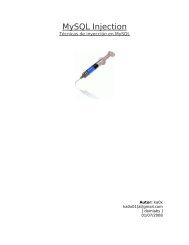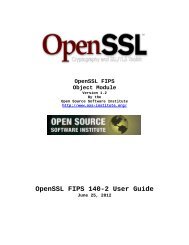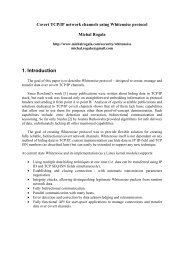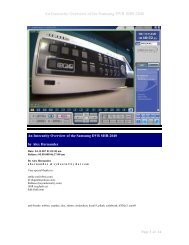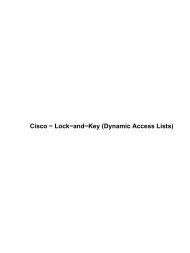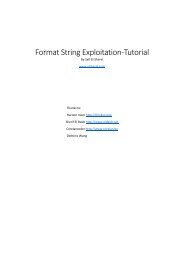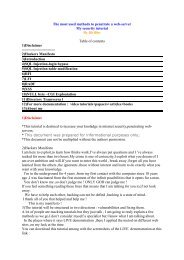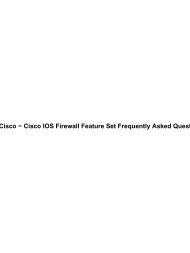x86-64 buffer overflow exploits and the borrowed code chunks - SuSE
x86-64 buffer overflow exploits and the borrowed code chunks - SuSE
x86-64 buffer overflow exploits and the borrowed code chunks - SuSE
Create successful ePaper yourself
Turn your PDF publications into a flip-book with our unique Google optimized e-Paper software.
7 AUTOMATED EXPLOITATION 12<br />
Figure 1: Six important <strong>code</strong> <strong>chunks</strong> <strong>and</strong> its op<strong>code</strong>s.<br />
Code <strong>chunks</strong> Op<strong>code</strong>s<br />
pop %rdi; retq 0x5f 0xc3<br />
pop %rsi; retq 0x5e 0xc<br />
pop %rdx; retq 0x5a 0xc3<br />
pop %rcx; retq 0x59 0xc3<br />
pop %r8; retq 0x41 0x58 0xc3<br />
pop %r9; retq 0x41 0x59 0xc3<br />
Figure 2: Stack layout of a 3-argument function call. Higher addresses at <strong>the</strong> top.<br />
...<br />
&function<br />
argument3<br />
&pop %rdx; retq<br />
argument2<br />
&pop %rsi; retq<br />
argument1<br />
&pop %rdi; retq<br />
...<br />
7 Automated exploitation<br />
During <strong>the</strong> last sections it was obvious that <strong>the</strong> described technique is very<br />
powerful <strong>and</strong> it is easily possible to bypass <strong>the</strong> <strong>buffer</strong> <strong>overflow</strong> protection<br />
based on <strong>the</strong> R/X splitting. Never<strong>the</strong>less it is a bit of a hassle to walk<br />
through <strong>the</strong> target <strong>code</strong> <strong>and</strong> search for proper instructions to build up a<br />
somewhat useful <strong>code</strong> chain. It would be much easier if something like<br />
a special shell<strong>code</strong> compiler would search <strong>the</strong> address space <strong>and</strong> build a<br />
fake stack which has all <strong>the</strong> <strong>code</strong> <strong>chunks</strong> <strong>and</strong> symbols already resolved<br />
<strong>and</strong> which can be imported by <strong>the</strong> exploit.<br />
The ABI says that <strong>the</strong> first six integer arguments are passed within <strong>the</strong> registers<br />
%rdi,%rsi,%rdx,%rcx,%r8,%r9 in that order. So we have<br />
to search for <strong>the</strong>se instructions which do not need to be placed on instruction<br />
boundary but can be located somewhere within an executable page.<br />
Lets have a look at <strong>the</strong> op<strong>code</strong>s of <strong>the</strong> <strong>code</strong> <strong>chunks</strong> we need at figure 1.<br />
As can be seen, <strong>the</strong> four most important <strong>chunks</strong> have only a length<br />
of two byte. The library calls attackers commonly need do not have more<br />
than three arguments in most cases. Chances to find <strong>the</strong>se two-byte <strong>chunks</strong><br />
within libc or o<strong>the</strong>r loaded libraries of <strong>the</strong> target program are very high.<br />
NO-NX



